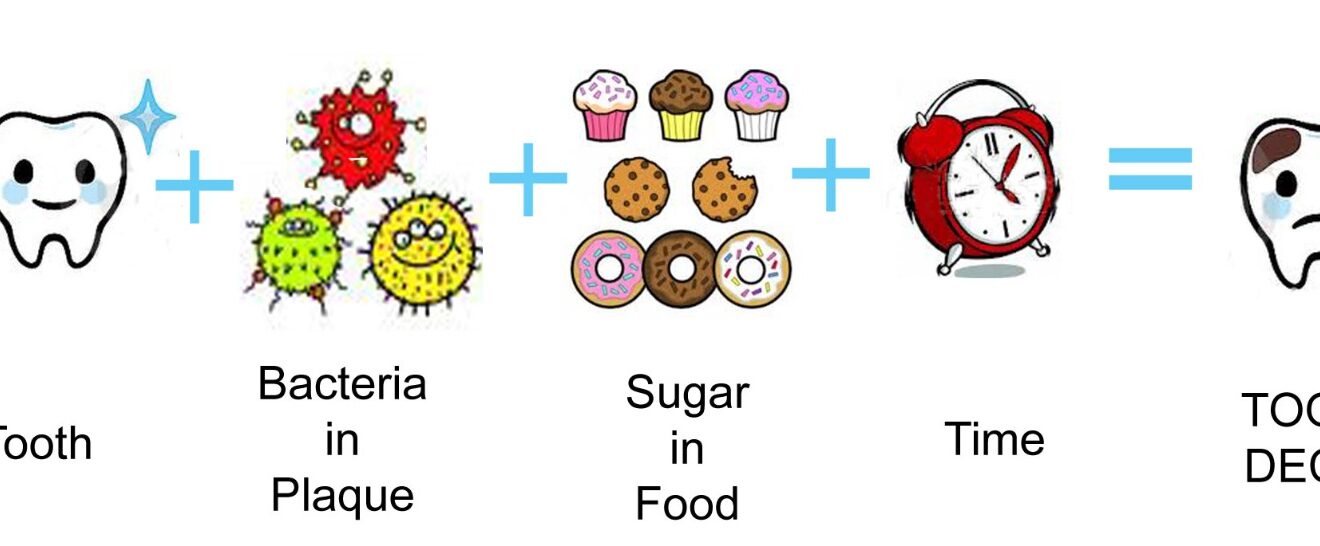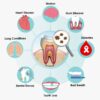The Science Behind Tooth Decay: How to Protect Your Smile with X-Rays
Tooth decay is one of the most common oral health issues, often developing silently until pain or sensitivity appears. But thanks to dental X-rays, dentists can detect cavities before they become severe, allowing for early treatment and prevention.
The image above breaks down the process of tooth decay into a simple equation:
🦷 Healthy Tooth + 🦠 Bacteria in Plaque + 🍩 Sugar in Food + ⏳ Time = 😢 TOOTH DECAY
Let’s explore how cavities form, how dental X-rays help in early detection, and how you can protect your smile.
Understanding Tooth Decay: A Step-by-Step Breakdown
1. Bacteria in Plaque: The Hidden Enemy
Our mouths contain bacteria—some beneficial, others harmful. Harmful bacteria form plaque, a sticky film that builds up on teeth. If not removed through brushing and flossing, plaque hardens into tartar, increasing the risk of decay and gum disease.
🦷 How X-Rays Help:
- X-rays can detect plaque buildup below the gum line and between teeth, where regular brushing may not reach.
2. Sugar in Food: Fuel for Bacteria
When we consume sugary foods and drinks, bacteria break down these sugars, producing acid that erodes the tooth’s protective enamel. Over time, this process leads to cavities.
🍬 Common culprits include:
- Candy, soda, and desserts
- Starchy foods like bread, chips, and pasta
🦷 How X-Rays Help:
- X-rays reveal early cavities that are not yet visible to the naked eye. This allows dentists to apply fluoride or dental sealants before cavities worsen.
3. Time: The Silent Culprit
The longer plaque and sugar stay on teeth, the more damage they cause. If decay is not detected early, it can spread from the enamel to the dentin and eventually reach the pulp, causing infections and severe pain.
🦷 How X-Rays Help:
- X-rays show how deep the decay has spread, helping dentists decide the best treatment—whether a filling, crown, or root canal.
The Importance of Dental X-Rays in Cavity Detection
Cavities don’t always cause pain in the early stages, making regular X-rays essential for early detection.
🔍 What X-Rays Can Detect:
✔️ Early-stage cavities between teeth
✔️ Decay beneath fillings and crowns
✔️ Bone loss due to gum disease
✔️ Wisdom teeth growth issues
✔️ Hidden infections or abscesses
📆 How Often Should You Get Dental X-Rays?
- Children: Every 6–12 months (since their teeth develop quickly).
- Adults: Every 1–2 years, or as recommended by the dentist.
- High-risk patients: More frequent X-rays if they have a history of cavities, gum disease, or restorations.
Preventing Tooth Decay: Tips for a Healthy Smile
✔️ Brush & Floss Daily: Removes plaque and food particles.
✔️ Limit Sugary Foods: Less sugar means fewer cavities.
✔️ Use Fluoride Toothpaste: Strengthens enamel.
✔️ Visit Your Dentist Regularly: Cleanings remove plaque and tartar.
✔️ Get Routine X-Rays: Early detection means easier, less expensive treatment.
Final Thoughts
Tooth decay doesn’t happen overnight—it’s a gradual process. The good news? Dental X-rays help detect problems early, preventing painful and costly treatments. By combining regular dental check-ups with good oral hygiene, you can keep your teeth strong and healthy for years to come!
So, don’t wait until a tooth hurts—schedule your next dental check-up and X-ray today! 🦷✨


